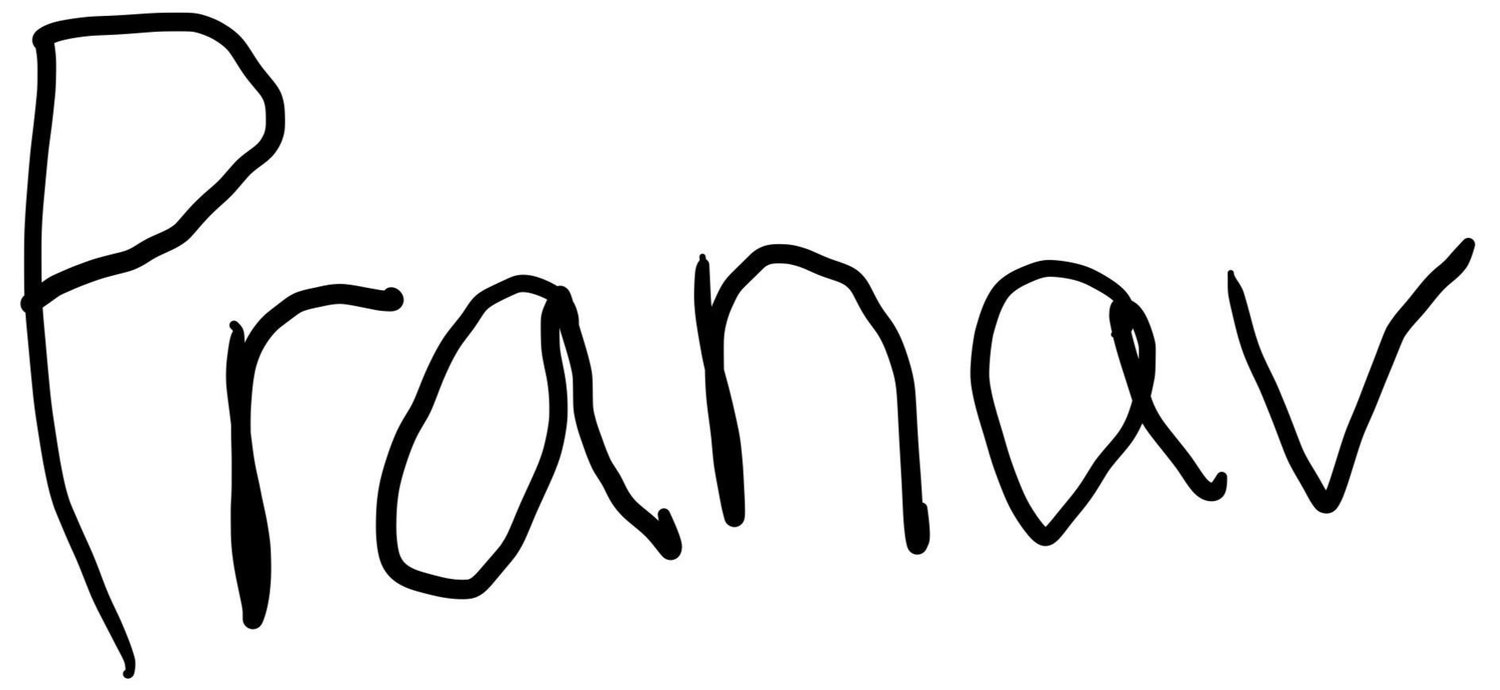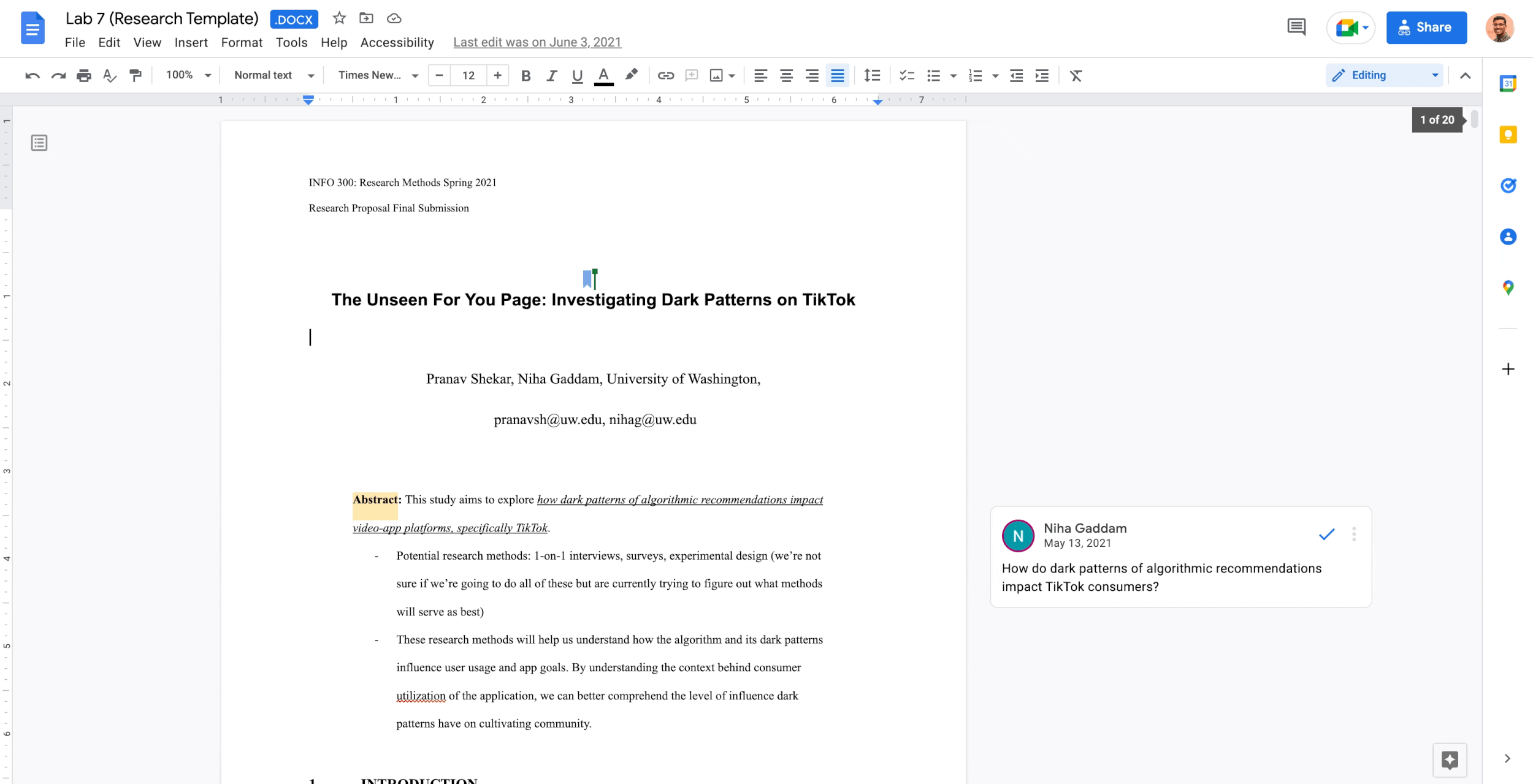The Unseen For You Page: Investigating Tiktok’s Algorithmic Dark Pattern
May - July 2021 (10 weeks)
Research Proposal
-
I collaborated with my team member as the Lead Researcher throughout the project cycle from initial brainstorming to method creation and paper formatting.
-
Google Scholar, Grounded Theory Analysis, Ideation, Literature Reviews, Miro, Peer Evaluation, Research Proposal, Storytelling, UX Research
Overview
In my Research Methods class, my team was tasked with developing a research proposal about an area of interest. As people who had used TikTok, we sought to develop academic expertise in an area that had, at the time, very little scholarship. We were intent on navigating one of the largest social networking sites to gain insight into the future of UI/UX design and how we can be intentional about the projects and products we develop.
The Challenge
The biggest challenge we faced was figuring out the scope of our study.
Given that TikTok didn’t have a large breadth of academic literature readily available, it was difficult to figure out how to begin theory construction. Working with our TA we spent many sessions brainstorming questions. Initially, many of our questions were too large in scope. Recognizing that we wanted to talk about dark patterns, we realized we would have more success analyzing a singular dark pattern. Thus, exploring the TikTok UI, we recognized the algorithm as the most notable dark pattern on the platform, consequently editing our research question to reflect this.
How do dark patterns of algorithmic recommendations impact TikTok consumers?
→
How does TikTok’s algorithmic dark pattern affect consumer well-being over time?
Research Proposal Abstract
Abstract: As students who recognize the material impacts TikTok has had on cultural discourse and digital habit development, creating scholarship on the app in an area of minimal academic literature will inform UI/UX designers and the future of social networking technology. Consequently, this study aims to examine the influence of TikTok’s algorithmic dark pattern on its consumers. Exploring this, we propose 15 semi-structured interviews with a diverse group of individuals, aged 16-23 years old, that use the platform three to five times or more per week. Using grounded theory analysis, we will begin preliminary theory construction by recognizing overarching themes that arise. Expected themes include users’ experiences with relative comparison, identity construction, and the influence of aesthetics. Analyzing these concepts, we can gain a greater understanding of algorithmic categorization and the effects this can create for young consumers in digital spaces, particularly as social networking sites grow in popularity.
To read the research proposal in its entirety, click here.
Limitations
→ Reach out to other institutions, specifically their Informatics and HCDE departments to see if their students were conducting similar studies on TikTok. Doing this could enable some really powerful discussion and iteration.
→ Run the study and see what insights we gathered, fleshing out our core question and hypothesis more.
→ Use our findings to connect to create a UI/UX manifesto or design standards to bring awareness to dark patterns and urge designers to create products that keep the user’s best interest in mind.
Next Steps
Our biggest limitation was doing this class project during the height of COVID-19. During normal academic years, students actually conduct their research proposal, however that was not a realistic goal for our term. That being said, we recognize that this is just a research proposal as opposed to a conducted study.
As with all research, we recognize the possibility for unconscious biases to impact how the study was created and what our expected results are. Throughout the quarter, we did our best to follow high-quality research practices.
Reflection
Throughout the timeline of this project, I learned the importance of intentionality–particularly when curating scope. Early on in the process, we faced difficulties from failing to fully grasp what our research proposal attempted to explore. Intending to investigate TikTok, we struggled to proceed forward because the scope was far too vague and large. However, after talking and many brainstorming sessions later we were able to specifically emphasize TikTok's algorithm as a dark pattern. Ultimately this project taught me the necessity of making decisions that keep the user in mind and our objective in the spotlight.
This project also taught me how to further academic scholarship. Recognizing that TikTok had not been academically explored, it was fun trying to discover what could be used as precedence. Looking at social media academia about Instagram, we found similar tropes that were replicated in TikTok. Looking at spaces of AI, machine learning, low self-esteem, therapy, etc., we began to create a comprehensive and heavily interconnected web that could be used for our grounded theory analysis. This project showed me that while TikTok hadn’t been explicitly analyzed much, there was precedence in the topics, themes, and repercussions—it was simply a matter of fleshing those strings out more.


